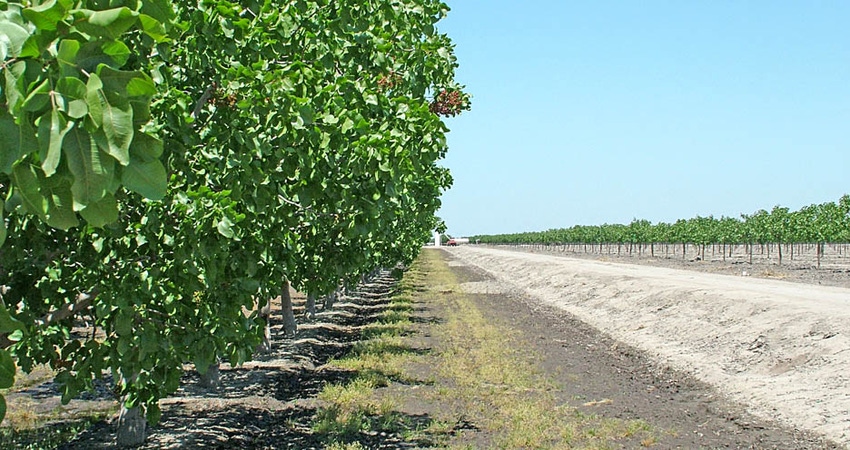
Getting the jump on weeds early in the season is especially critical for pistachio growers in a dry year like this. Knocking out weeds now will not only help extend limited supplies of irrigation water, but, it can also help protect newly-planted pistachio trees from the deadly threat of false chinch bug.
Trees with cardboard trunk guards are particularly vulnerable, since these guards shelter the bugs during the day. Their feeding can cause young trees to wilt and die. On older trees this can cause leaves to drop.
False chinch bugs can occur in high numbers on weeds in or next to pistachio orchards. Only about .12 inches or 3 mm long, the adult false chinch bug is gray to light brown in color and looks somewhat like a small lygus bug. The nymph is gray with a reddish brown abdomen.
The eggs are laid randomly on the soil or within soil cracks near weeds. The false chinch bug spends the winter primarily in the nymph stage on weeds. Although this pest can move into pistachio trees in the fall, the most serious infestations occur in the spring. As weeds dry or are destroyed, the nymphs and maybe some adults migrate to the trees in early morning or evening where they feed.
Although wild mustard, wild radish and shepherd's-purse can serve as hosts, false chinch bugs prefer London rocket and spotted spurge. “When these weeds dry, the chinch bugs can roar out onto your young budded trees and kill them with the toxin associated with their mass feeding,” says Bob Beede, University of California Cooperative Extension farm advisor, emeritus, in his April Task List for Pistachios newsletter.
The UC IPM guidelines recommend treating newly-planted trees, if bugs are numerous enough to cause wilting. Treat either in the evening or early morning when chinch bugs are active. Information on treating this pest with a permethrin insecticide is available at www.ipm.ucdavis.edu.
Also, Beede points out, it’s important to target your weed control program at lygus and stinkbug hosts, such as clovers, Russian thistle and birdsfoot trefoil. Grasses are not hosts for lygus.
About the Author(s)
You May Also Like




